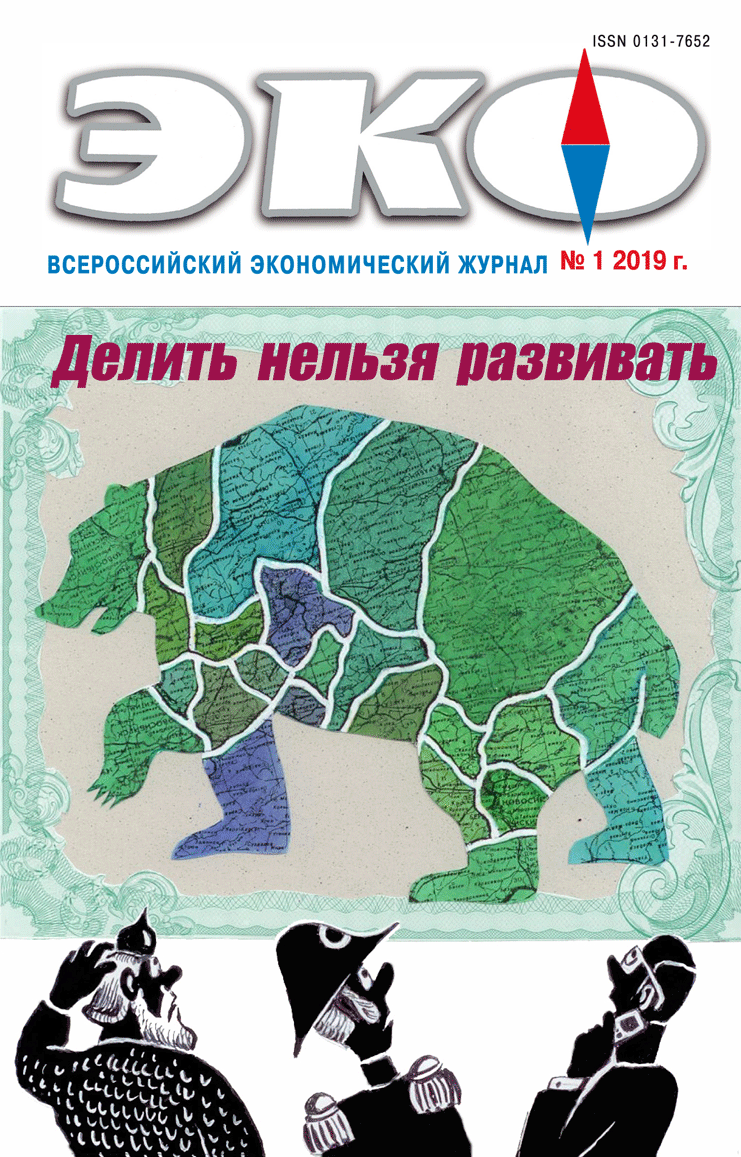DEBATES
Published 2019-01-08
Keywords
- Nobel prize on economics,
- mathematical models,
- scientific and technological progress,
- climate change,
- feedback
- endogenous,
- exogenous,
- patent system,
- long-run development ...More
How to Cite
1.
Voronov Ю. In the World of Feedbacks (About Nobel Prize on Economics 2018). ECO [Internet]. 2019 Jan. 8 [cited 2024 Sep. 27];49(1):180-92. Available from: https://ecotrends.ru/index.php/eco/article/view/1757
Abstract
The results of American economists William Nordhaus and Pol Romer investigations are described in the article. They have got Nobel prize on economics for them. The general criterion for two winners is defined by which the Nobel Committee was guided really. It is introduction of feedbacks in economic and mathematical modeling. Methods of comparison of Nobel 2018 laureates ‘ achievements with the results of their predecessors (K. Arrow; R. Solow; J. Shmookler and others) are used. The progress made by the laureates themselves is noted. Three blocks in the models of W. Nordhaus and P. Romer are distinguished; and the functions of each of them are considered. The assumptions that underlie the models constructed by them are also considered.The author notes that climate change models are also being built in Russia; but there are no economic blocks in them; models of long-term economic growth with endogenous scientific and technological progress are formed in Russia also; but representatives of natural Sciences do not participate in them. It follows from the experience of the laureates that this gap should be bridged. The article also describes the hobbies of both winners.References
- Кравцов А. А. Развитие исследований инновационных процессов на основе патентной статистики: аналитический обзор// Журнал Новой экономической ассоциации. 2017. № 3 (35). С. 144–167. / Kravcov A. A. (2017). Razvitie issledovanij innovacionnych processov na osnove patentnoj ststistiki: analiticzeskij obzor. Jurnal Novoj ekonomiczeskoj associacii. No. 3. Pp. 144–167. (In Russ.).
- Самуэльсон П., Нордхаус У. Экономика – Economics, 19-e. издание, М.: «Вильямс», 2014. 1360 с. / Samuelson P., Nordhaus W. (2014). Economics. Moscow. Vilyams Publ. 1360 p. (In Russ.).
- Arrow K. (1962). The Economic Implications of Learning by Doing. The Review of Economic Studies. June. Pр. 155–173.
- Solow R. A. (1956). Contribution to the Theory of Economic Growth. Quarterly Journal of Economics, February. Pр. 65–94.
- Ulku H. (2004). R&D, Innovation, and Economic Growth: An Empirical Analysis. IMF Working Paper.
- Romer P. M. (1986). Increasing Returns and Long-Run Growth. The Journal of Political Economy. October. Pр. 1002–1037.
- Zamparelli L. (2011). Induced Innovation, Endogenous Growth, and Income Distribution: a Model Along Classical Lines. CeLEG Working Paper Series, No. 2.
- Schmookler J. (1966). Invention and Economic Growth, Cambridge, MA: Harvard University Press.
- Abernathy W. J. (1978). The Productivity Dilemma: Roadblock to Innovation in the Automobile Industry, Baltimore, Johns Hopkins University Press.
- Pavitt K. (1984). Sectoral Patterns of Technical Change: Towards a Taxonomy and a Theory. Research Policy. 13: 343–373. Doi:10.1016/0048–7333(84)90018–0
- Nordhaus W. (2004). The Climate Casino: Risk, Uncertainty and Economics for a Warming World.

